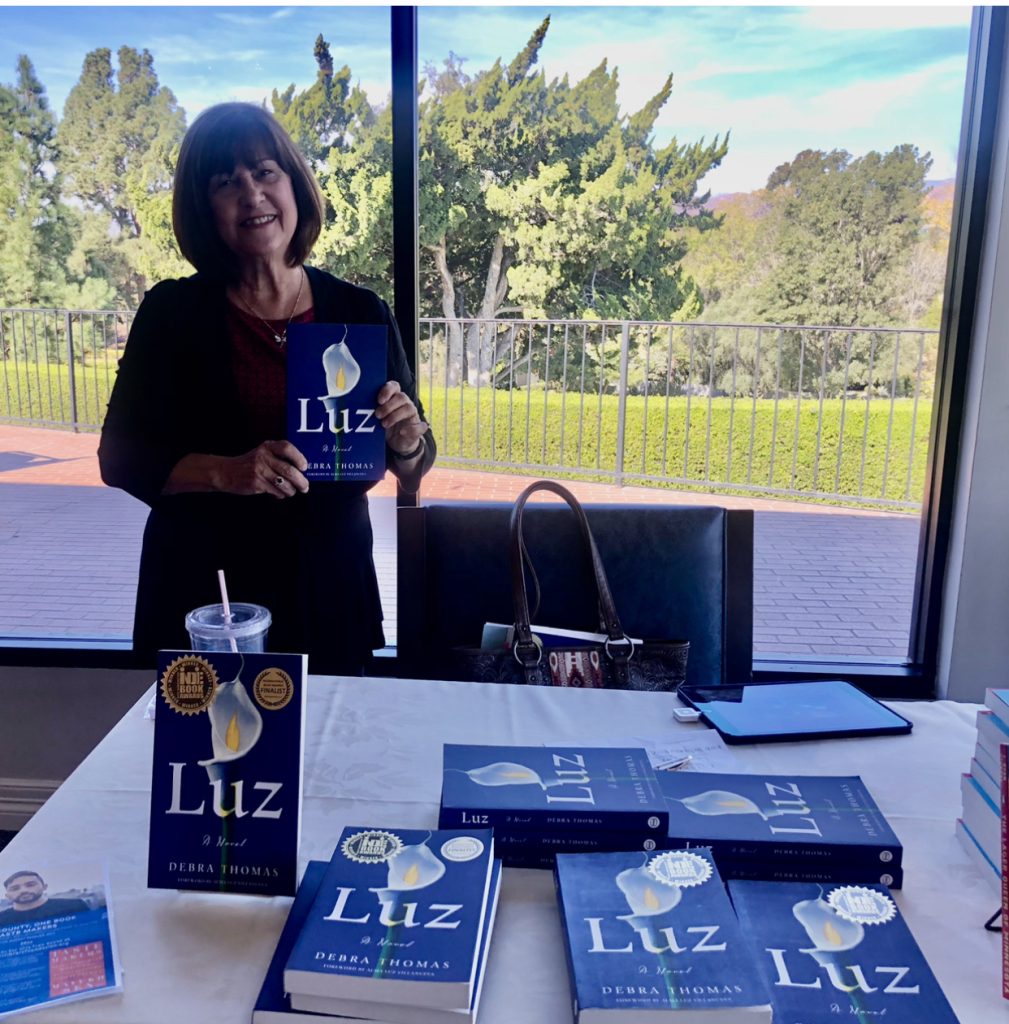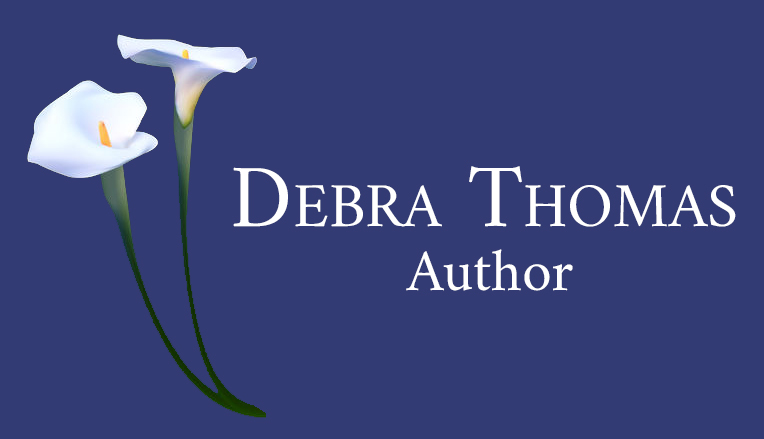American Association of University Women
American Association of University Women Authors’ Luncheon
November 5th
(General Notes to my presentation )
It was such an honor to be invited to speak at the Camarillo Branch of the American Association of University Women.
When I discovered their mission was to provide equity in education for women and girls, and in particular, that they help fund scholarships for “courageous women returning to college,” as well as Tech Trek, a program for 8th grade girls that encourages them to pursue math, science, and technology, I felt an immediate connection—for two very specific reasons.
The First Reason
In my sixties, I can now look back with pride and say that, in my mid-thirties, I was one those “courageous women who returned to college.”
After graduating from high school in Binghamton, NY, I wanted to go to college to study literature. I was a voracious reader and dreamed of being a novelist. But for many reasons, I ended up go to the local hospital school of nursing, a 3-year program called a diploma school of nursing. I became an RN, worked in ICU, and married my high school sweetheart.
We moved to LA when he got accepted at UCLA School of Law. I worked at UCLA Medical Center and took a few fiction writing classes at UCLA Extension Writers Program. But I knew it wasn’t enough. My goal was to go to college and study literature, to get a depth and breadth of knowledge so I could be a better a writer.
After working my husband’s way through UCLA Law School and having two children—once they were in school, it was my turn. It took me seven years at California State University, Northridge to complete a bachelors and masters in English. My hope was to teach community college, but the year I graduated, they put a freeze on hiring. The only job I could find at the time was teaching English as a Second Language (ESL) to adults. That had not been my plan at all—but that experience ended up changing my life in many wonderful ways.
ESL
At the time, my marriage was ending, and like many of my ESL students, I was starting over. I was 3,000 miles away from my family who were on the east coast. Being around my Spanish-speaking students brought me back to my days of growing up in an Italian neighborhood. There were so many similarities: the Italian and Spanish languages are very similar, the ranchero music they played during breaks reminded me of the music my grandfather played on his “squeezabox,” the Catholic religion, the central role of the mother and the Blessed Virgin/Virgin of Guadalupe, even the food—an enchilada is like manicotti, cheese in the middle with red sauce on top! For many reasons, I felt a deeply personal connection. They became my friends and my surrogate family.
Around this time I kept reading in the LA Times about the increasing deaths in the desert, week after week, as desperate migrants attempted to cross the US-Mexico border. This was in the mid to late 90s when the Mexican economy had plummeted and the peso was devalued. In response our government began Operation Gatekeeper in California. Increased fencing, high tech lighting, underground sensors, and increased border patrol. The hope was “Prevention through deterrence.” It didn’t work. It only pushed the migrants further east through the desert—where they were dying by increasing numbers.
Immigrant Rights Advocate
I had heard my students’ stories, what their lives were like, why they were compelled to leave their home country, etc. I wanted to help in some way. As complex as the issue was and still is, I wanted to do something positive. Shine some light in the darkness. My mantra has always been: It’s better to light a candle than to curse the darkness.
So I became involved in immigrant rights groups. With Amnesty International, I focused on immigrant and refugee rights. With BorderLinks organization, I toured the border at Nogales, Arizona and Nogales, Mexico and spoke with diverse people on both sides, including border patrol. Then I read in the LA Times about Water Stations Project, led by Father Richard Estrada, volunteers who went into the desert once a month and left water at strategic spots marked by blue flags. (This group, now called Border Angels and based in San Diego, still brings water to the desert and works with migrant families in shelters at the border.)
Teaching High School / District Intern Program
Teaching ESL was a part-time job. It didn’t bring in enough money. I was a single mother and needed a full-time job with benefits. I couldn’t teach in public schools with only a masters. I needed a teaching credential. I had an opportunity to work on a single subject teaching credential, while teaching full time for Los Angeles Unified School District—doubling my salary and benefits. It was called the District Intern Program. It was a lot of work. Creating lessons plans from scratch, grading papers nights and weekends, while taking classes and writing papers for my credential.
But the best part was I was teaching at a year-round school—James Monroe High School. I would teach 4 months, have 2 off, teach 4, 2 off—paid through the whole year. Once I finished the credential program, this meant I had two-month stretches to focus on writing. Finally!
Writing
Remember how I always dreamed of being a novelist? The chaos of life had certainly gotten in the way. Over the years, I had taken a few writing classes at UCLA’s Extension Writers Program. I’d a written a few stories, even won a contest, but never had time in all the chaos of my life to focus on a novel. Now I had the time.
So what would my novel be about? Write what you know. Write what keeps you up at night. Write what’s in your heart. Well, even at Monroe HS, my life still involved immigrant families, and I was still very much involved in immigrant rights. So I decided to write about what I’d heard, read, and seen.
I wanted readers to better understand the immigrant experience that I had come to know.
First, I started writing from the point of view of someone like me: a white woman observing and learning about border issues. But it fell flat. It lacked passion and urgency. So I signed up for a novel-writing class at UCLA with Gayle Brandeis, winner of the Barbara Kingsolver Bellwether Prize for fiction of social justice.
In response to an assignment, I began writing in the voice of a young Mexican girl, Alma, whose father was a migrant farmworker who goes missing—and so Alma and her sister Rosa set out on a journey from southern most Mexico to US to see what they can learn about their father. Along the way, they meet a young man from Guatemala, Manuel, who joins them on their journey and with whom Alma will fell in love. They encounter great kindness, but also profound cruelty. Ultimately, it’s a story of love and hope.
Alma’s voice was the voice of one deeply personal immigrant experience that I hoped readers would get swept up in and feel for themselves. I wanted to achieve what Atticus Finch told Scout in To Kill a Mockingbird, “You never really understand a person until you consider things from his or her point of view. Until you climb inside of her skin and walk around in it.”
LUZ
 The novel was titled Luz—which means light in Spanish, and it’s also Alma’s daughter’s name. In fact, the novel is the story Alma hopes to tell her daughter when she’s older.
The novel was titled Luz—which means light in Spanish, and it’s also Alma’s daughter’s name. In fact, the novel is the story Alma hopes to tell her daughter when she’s older.
Published in the midst of the pandemic in June 2020, I’m pleased to say it went on to win awards, especially the highly respected Sarton Award for Contemporary Fiction, which meant the world to me. Writer and poet, May Sarton had inspired me for decades. I still have my weathered paperback of Journal of Solitude, dog-eared, underlined, comments in the margins.
All of this is what happened to one “courageous woman who returned to college.”
Second Reason:
Encouraging girls to pursue Math and Science.
In my novel, Luz, Alma loves math and wants to be a math teacher one day. Her father encourages Alma to continue her education, while many fathers in her community make their daughters leave school at thirteen or fourteen. This is another reason Alma is desperate to find her father; with his disappearance, she has lost her dream as well.
Early on in Alma’s journey, she is given a blank notebook, but instead of keeping a journal/diary, she begins writing math word problems that concern parts of her travels. There are ten math problems throughout the novel, with answers in the back. I wasn’t sure how readers would respond to this unusual addition to a novel, but to my joy, it’s been warmly received.
As a high school teacher, I did this because I wanted to encourage young girls to see math as cool, even fun. Instead of Alma writing poems or stories or keeping a diary—she creates math problems.
Then, in my second novel which comes out next spring, Josie and Vic, as a young girl my protagonist, Josie, is fascinated with science—geology, in particular. In fact, the concept of Pangaea, the supercontinent that broke apart and formed our separate continents, plays an important role in the novel. Josie compares her family to Pangaea, breaking apart since her father abandoned them and her brother, Vic, prepares to leave for Vietnam. Josie will go on to study geology in college. So again, I have a protagonist who as a young girl loves science.
I’d like to close with a message that drives my writing. Finding ways to connect is so important today in our country, our communities, in our families. In my writing, I strive to reach across differences and make connections—to convey how we are more alike than we are different. In Luz, I hoped to build a bridge of understanding regarding complex issues of immigration. In my upcoming novel, Josie and Vic, a fragmented family is given a chance to reconnect—despite their differences.
So imagine my joy when I discovered that AAUW supported a girls’ summer camp focusing on science and math, as well as courageous women who return to college. Such personal connections for me with your wonderful organization. Thank you again for the honor of speaking at your annual Authors’ Luncheon.



